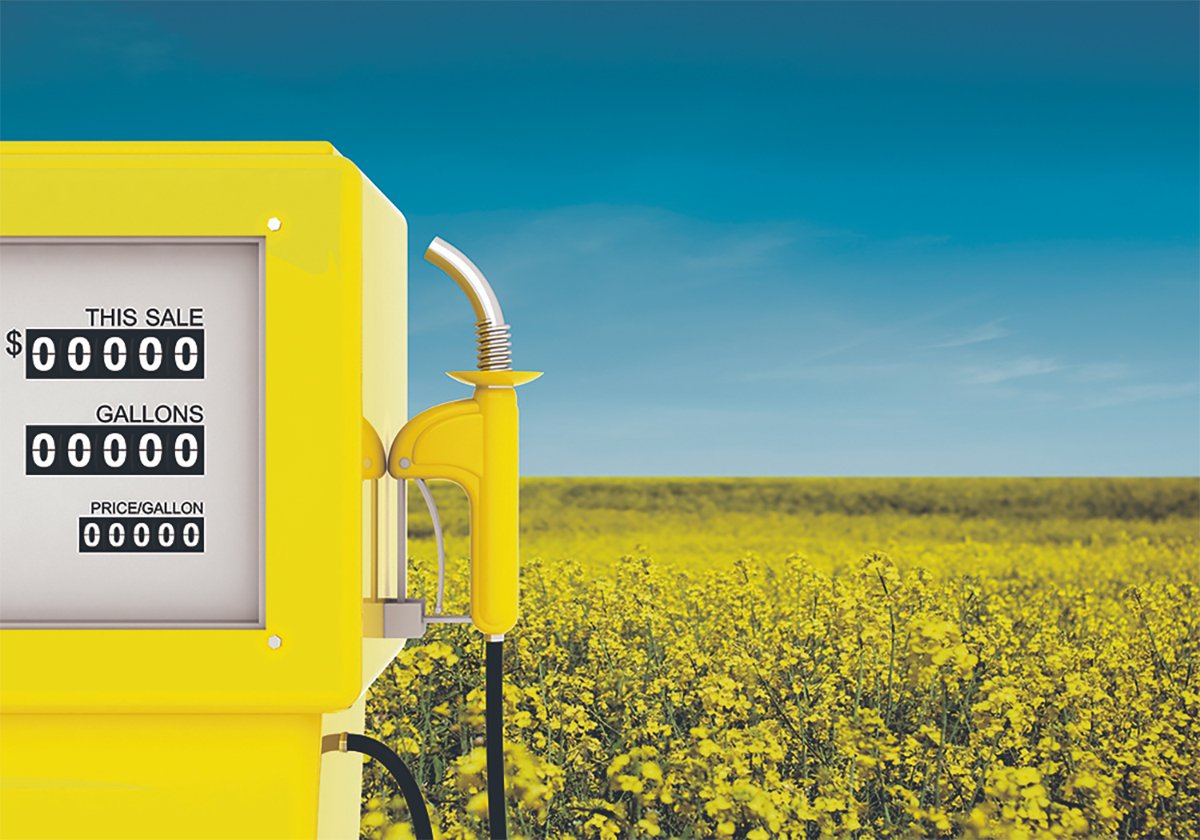We’ve covered the spectacular rise in wheat prices in news stories this week so I’ll try to explain recent developments in the canola market.
It and other oilseeds markets fell in early June when Malaysian palm futures took a nosedive.
You might remember our coverage at the end of May about the red hot palm oil market. Palm’s price on the Malaysian commodities exchange, Bursa Malaysia, peaked June 5, but then over the next few days dropped 14 percent.
Like all flames, the palm rally simply burned itself out.
Read Also

Biofuel sector happy with federal budget
Advanced Biofuels Canada says new Biofuel Production Incentive is a lifeline until CFR amendments are in place.
The price had soared because of tight supplies, strong demand and reduced American soybean acres.
The furious export pace and the soaring price caused Indonesia, tied with Malaysia as the world’s largest producer, to talk about restricting exports to ensure a reasonably priced domestic supply for the cooking oil market.
That threat, and its implication of reduced available world supply, simply drove the market higher.
But that put palm oil’s price well above soybean oil and buyers started switching to cheaper alternatives. Palm oil exports from Malaysia in the first two weeks of June dropped almost 19 percent from the same period in May.
At the same time Bursa Malaysia, to control the speculative frenzy, imposed stiff increases on gross margin rates, which is the deposit traders must make with their brokers on each trade. Also, analysts began to talk about the normal seasonal trend toward larger production.
That chilled trading starting June 6 and the price dropped steeply for the next few days but appeared to stabilize late last week, partly on confirmation that Indonesia would use export taxes to maintain adequate domestic supply.
This activity in palm was felt in other oilseed markets.
Canola July futures dropped from a recent high of $392 per tonne June 5 to $376.50 June 8 before recovering to about $383 by the start of this week on worries about dry conditions east of the Mississippi River hurting U.S. soybean yield potential.
Although palm oil’s fire may have cooled for now, strong support remains for oilseed prices.
The U.S. soybean crop is smaller than last year and, as mentioned, it is threatened by dry weather.
South America will likely increase soybean area, but high corn prices will offer strong competition for acres and so the seeded area increase might not be as large as you’d expect.
Vegetable oil demand from China and India remains voracious. In the first five months of this year, China’s imports of soy oil were up 50 percent over last year in the same period and palm oil imports were up 29 percent.
China’s canola-rapeseed crop is smaller than last year and analysts expect its imports of Canadian canola will increase in the new crop year.
On the negative side, biodiesel production in Europe is struggling because the biggest producer, Germany, has begun taxing the fuel, which eliminated its price advantage over standard diesel.
Germany’s biodiesel industry is now operating at 50 percent of capacity.
However, around the world more biodiesel plants are coming on line, taking increased amounts of vegetable oil.
And petroleum oil prices, which climbed to 10 month highs early this week on unrest in Nigeria and tight U.S. refinery capacity, are also helping to support oilseed prices.














